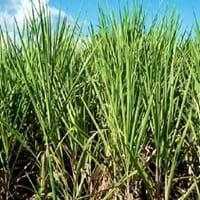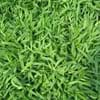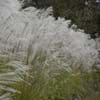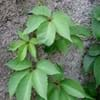Life Span
Perennial
Perennial
Origin
Southeastern Asia, Melanesia, Micronesia
Mediterranean, Northern Africa
Types
Not Available
Not Available
Number of Varieties
Not Available
Habitat
agricultural areas, Wet lands
marshes, Riverbanks
USDA Hardiness Zone
10-15
6-9
AHS Heat Zone
12 - 9
9 - 6
Sunset Zone
H1, H2, 8, 9, 20, 21, 22, 23, 24
Not Available
Habit
Clump-Forming
Upright/Erect
Flower Color
White hair and some brown spots on margins and at tips
Purple, Silver
Flower Color Modifier
Bicolor
Bicolor
Fruit Color
Not Available
Purple
Leaf Color in Spring
Green
White, Gray Green
Leaf Color in Summer
Light Green
Light Green
Leaf Color in Fall
Green
Purple, Tan
Leaf Color in Winter
Green
Purple, Tan
Leaf Shape
Acicular
Grass like
Plant Season
Summer, Fall
Summer, Fall, Winter
Sunlight
Full Sun
Full Sun
Growth Rate
Very Fast
Medium
Type of Soil
Clay, Loam, Sand
Loam
The pH of Soil
Acidic, Neutral, Alkaline
Acidic, Neutral
Soil Drainage
Average
Well drained
Bloom Time
Early Summer, Summer, Late Summer, Early Fall
Late Summer, Fall
Tolerances
Wet Site, Drought
Drought
Where to Plant?
Ground
Ground
How to Plant?
Seedlings, Stem Cutting
Seedlings, Vegetative
Plant Maintenance
High
Medium
Watering Requirements
Water Deeply
Water once every two or three weeks
In Summer
Lots of watering
Lots of watering
In Spring
Moderate
Moderate
In Winter
Average Water
Average Water
Soil pH
Acidic, Neutral, Alkaline
Acidic, Neutral
Soil Type
Clay, Loam, Sand
Loam
Soil Drainage Capacity
Average
Well drained
Sun Exposure
Full Sun
Full Sun
Pruning
Prune ocassionally, Remove dead branches, Remove Ferns
Cut back all stems to the same height
Fertilizers
Equal amount of N,P,K, fertilize in growing season
0-10-10 NPK fertilizer
Pests and Diseases
Beetles, Fusarium root rot, Head smut
Drought, Edema
Plant Tolerance
Heat Tolerance, Shade areas
Drought
Flower Petal Number
Single
Single
Foliage Texture
Coarse
Fine
Foliage Sheen
Matte
Matte
Attracts
Butterflies, Rats, Squirrels
Birds
Allergy
Diabetes, Sleepiness
Noxious Weed
Aesthetic Uses
Not Used For Aesthetic Purpose
Borders, Showy Purposes
Beauty Benefits
Maintains teeth healthy, Making cosmetics
Not Available
Environmental Uses
Food for animals, Food for birds
Erosion control
Medicinal Uses
Aging, Antidepressant, Aphrodisiac, Appetite enhancer, Diuretic, Fatigue, Muscle Pain, Nutrients
Not Available
Part of Plant Used
Leaf Stalks, Leaves, Stem
Leaves
Other Uses
Animal Feed, Biomass for fuel, Can be made into a herbal tea, Food for animals, Sometimes used for making wine
Cultivated for fodder
Used As Indoor Plant
No
No
Used As Outdoor Plant
Yes
Yes
Garden Design
Dried Flower/Everlasting, Edible, Feature Plant, Tropical
Cutflower, Dried Flower/Everlasting, Feature Plant, Mixed Border
Botanical Name
SACCHARUM officinarum
SACCHARUM ravennae
Common Name
Sugarcane
Hardy Pampas Grass, Plume Grass, Ravennagrass
In Hindi
गन्ना
Plume Grass
In German
Saccharum
Plume Gras
In French
Canne à sucre
Plume Herbe
In Spanish
Saccharum
Penacho de hierba
In Greek
Saccharum
Plume Grass
In Portuguese
Cana-de-açúcar
Plume grama
In Polish
Saccharum
Pióropusz Trawa
In Latin
Saccharum
Kessinger Grass
Phylum
Magnoliophyta
Magnoliophyta
Class
Liliopsida
Lilopsida
Order
Cyperales
Cyperales
Genus
Saccharum
Saccharum
Clade
Commelinids, Monocots
Angiosperms, Commelinids, Monocots
Tribe
Andropogoneae
Andropogoneae
Subfamily
Panicoideae
Panicoideae
Number of Species
Not Available
Properties of Sugarcane and Plume Grass
Wondering what are the properties of Sugarcane and Plume Grass? We provide you with everything About Sugarcane and Plume Grass. Sugarcane doesn't have thorns and Plume Grass doesn't have thorns. Also Sugarcane does not have fragrant flowers. Sugarcane has allergic reactions like Diabetes and Sleepiness and Plume Grass has allergic reactions like Diabetes and Sleepiness. Compare all the properties and characteristics of these two plants. Find out which of these plant can be used as indoor plant. If you are interested to decorate your house and garden, find out aesthetic uses, compare them and select the plant which will beautify your surrounding. Along with beautification, try comparing medicinal and edible uses of Sugarcane and Plume Grass and you can choose the plant having best and most benefits.
Season and Care of Sugarcane and Plume Grass
Season and care of Sugarcane and Plume Grass is important to know. While considering everything about Sugarcane and Plume Grass Care, growing season is an essential factor. Sugarcane season is Summer and Fall and Plume Grass season is Summer and Fall. The type of soil for Sugarcane is Clay, Loam, Sand and for Plume Grass is Loam while the PH of soil for Sugarcane is Acidic, Neutral, Alkaline and for Plume Grass is Acidic, Neutral.
Sugarcane and Plume Grass Physical Information
Sugarcane and Plume Grass physical information is very important for comparison. Sugarcane height is 30.00 cm and width 180.00 cm whereas Plume Grass height is 240.00 cm and width 120.00 cm. The color specification of Sugarcane and Plume Grass are as follows:
Sugarcane flower color: White hair and some brown spots on margins and at tips
Sugarcane leaf color: Green
Plume Grass flower color: Purple and Silver
- Plume Grass leaf color: White and Gray Green
Care of Sugarcane and Plume Grass
Care of Sugarcane and Plume Grass include pruning, fertilizers, watering etc. Sugarcane pruning is done Prune ocassionally, Remove dead branches and Remove Ferns and Plume Grass pruning is done Cut back all stems to the same height. In summer Sugarcane needs Lots of watering and in winter, it needs Average Water. Whereas, in summer Plume Grass needs Lots of watering and in winter, it needs Average Water.





